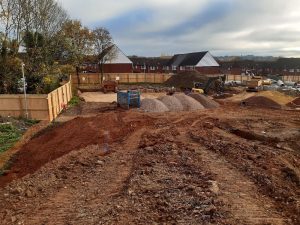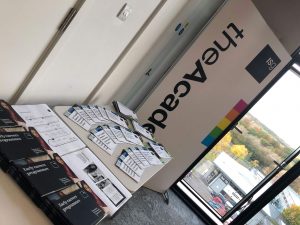I have a question for you all – do you love where you live?
And I mean really love it. That perfect can’t-live-anywhere-else, bury-me-in-the-back-garden type of belonging, where just walking around your neighbourhood is enough to nourish you.
Thought not.
Now, it might be the rise of online shopping. Or austerity. But over the last few years in particular, there’s been a real change in the way we relate to place. Shuttering high streets, the pandemic years – don’t even get me started on cost of living. Wherever you live, it’s probably starting to look a little tired. And your surroundings affect your mental state – whether you realise or not.
Last year, I moved onto a street with trees for the first time. When I work from home (as I am now) I sit by the window. I go for walks on my lunch break. It makes me more productive, and more importantly, happier.
Working in procurement can give us a massive impact on the places we live and work in. Wanting to do so is probably why most of us are in the industry to begin with. But sometimes, there are so many things you need to accomplish that it can get overwhelming.
Having a key mission you want to achieve is one of the key parts of driving local change. Yet, I believe it is also one of the most neglected – especially within social value. On every side of the procurement industry, people have caught on to the transformative power social value can have on local communities.
But to realise its full potential, we can’t just look at individual opportunities – we need to see the bigger picture.
If there’s one person who knows how to make this work, it’s Kathryn Moore – President of the International Federation of Landscape Architects. Author, researcher, and governmental advisor, Kathryn has had an incredible career – leaving her stamp on people and places across the country.
But the project that caught my attention, more than anything, is her latest – and most ambitious – to date. Kathryn wants to make the West Midlands, one of the most built up, industrialised, and densely populated parts of the UK, into the nation’s newest National Park.
Stay with me on this – It’s a pretty staggering concept, to say the least. But so far, it has been an enormous success. In recent months, you might have seen it in the Guardian and the Telegraph. But even before then, it had been endorsed by the West Midlands Combined Authority and applauded by the UK Government’s Landscape Review. Safe to say, it’s going somewhere.
When I spoke to Kathryn earlier this year, I was struck by her ability to distil huge concepts into simple manifestoes. This, I believe, is the key to her success. Whatever she does, she knows exactly what she wants to get out of it.
In conversation, something as ambitious as completely rethinking the idea of National Parks is broken down into smaller, crystal-clear targets. However many hundreds of miles the West Midlands project might span, any action is guided by the three key points of reducing deprivation, improving quality of life and building a sustainable environment.
Having these specific targets means that rather than getting bogged down with lofty, yet dangerously wishy-washy ambitions, Kathryn and her collaborators can take tangible, individual outcomes and work towards them, step-by-step.
Whether you are looking to consolidate your social value priorities, or considering a new project in your area, take a step back and think – what do the people you are serving need?
Kathryn believes that every child deserves to see the stars at night – and so, as a landscape architect, this simple declaration impacts the way she positions houses and designs road layouts, how much land she reserves for green space, and the way she landscapes it.
In her National Park project, she uses these simple aims to shape policy from the top down, collaborating with key sectors to bring geography, history, art, and science into a cohesive (and ultimately successful) whole.
I challenge you all to do the same. People need a connection with their territory. To harness that, you need a story, a vision, a narrative.
And while not all projects are as big as the West Midlands National Park, when you think about projects of any scale, we could all benefit from stripping our aims back to basics and asking ourselves: what sort of place would you live in if you had the choice?
And most importantly, how can you get there?



